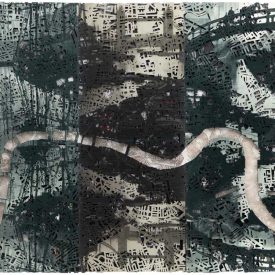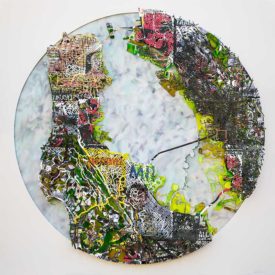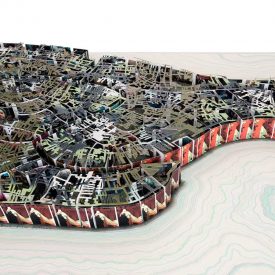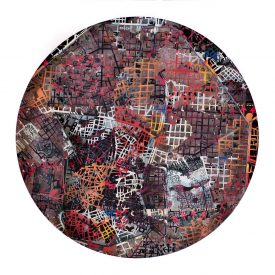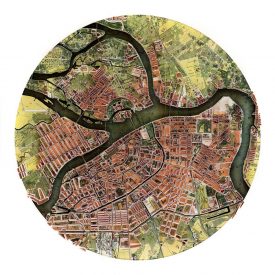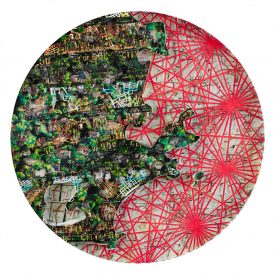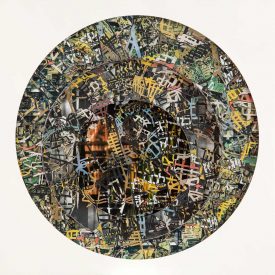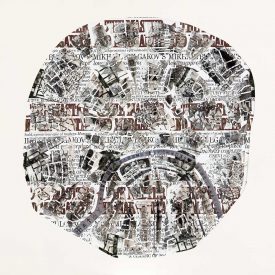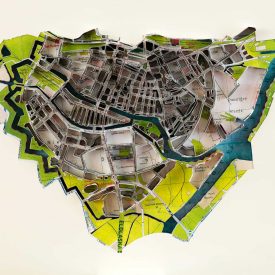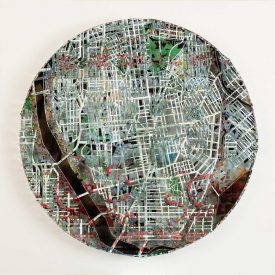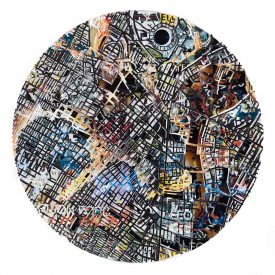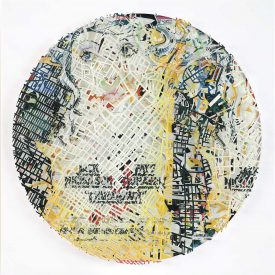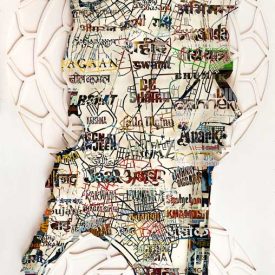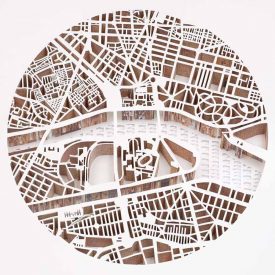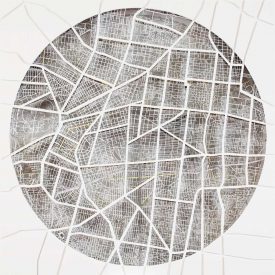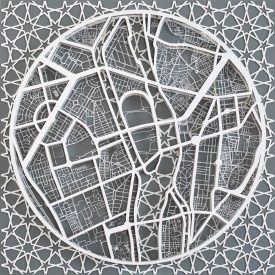To spend time exploring the Zocalo, the vast square in the heart of the oldest part of Mexico City is to become aware of the layers of history in the city, the remnants of which are all visible here. High above the square a huge Mexican flag flies, in it’s center is the emblem depicting the myth of the founding of the city, The Eagle devouring a snake upon a cactus. The original city of Tenochtitlan was built on an island in Lake Texcoco, the drained lake is the bowl in which Mexico City currently sits. The surrounding Spanish Palace and the Catholic Cathedrals were built on top of the leveled Aztec pyramids of Tenochtitlan, the bases of which can be seen partially unearthed beneath the flagstones of the square. It was here, during excavations that the great Sunstone, the Aztec Calendar was discovered. Octavio Paz wrote his poem “La Piedra Del Sol” based upon the 584 day Aztec calendar, creating a work of art that in some respects is a poetic reflection of the duality of Mexico and Mexican History. A history, which in a sense, is a narrative about one civilization being grafted upon another and one which contains all the traumas that have occurred since. Texts from the beginning and the end of the poem have been cut through the interior walls of the sculpture. The main body of the sculpture has text in English, the interior circumference contains the original Spanish text. Underneath the layer containing the text is a pale stenciled form of the actual sunstone calendar.
In the palaces surrounding the Zocalo are some of the famous murals by Diego Riviera and Siqueiros, most of which are paintings that are a visual representation of the history of Mexico. These date from the 1920’s and 30s during the turbulent revolutionary era in Mexico City. Images from these murals are suspended underneath the main street network inside the sculpture. The surface network of streets in the sculpture has been cut from a map of contemporary Mexico City.
